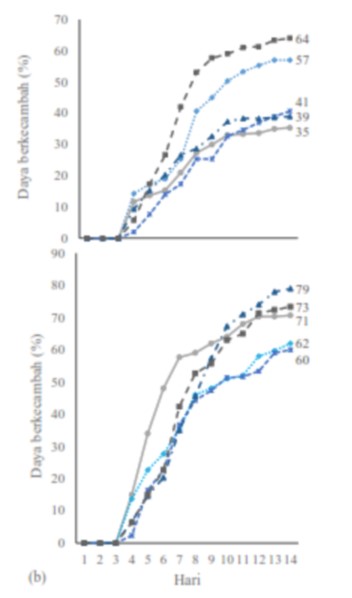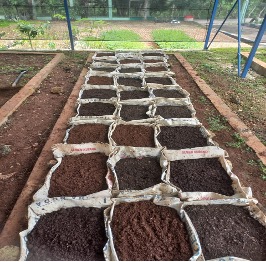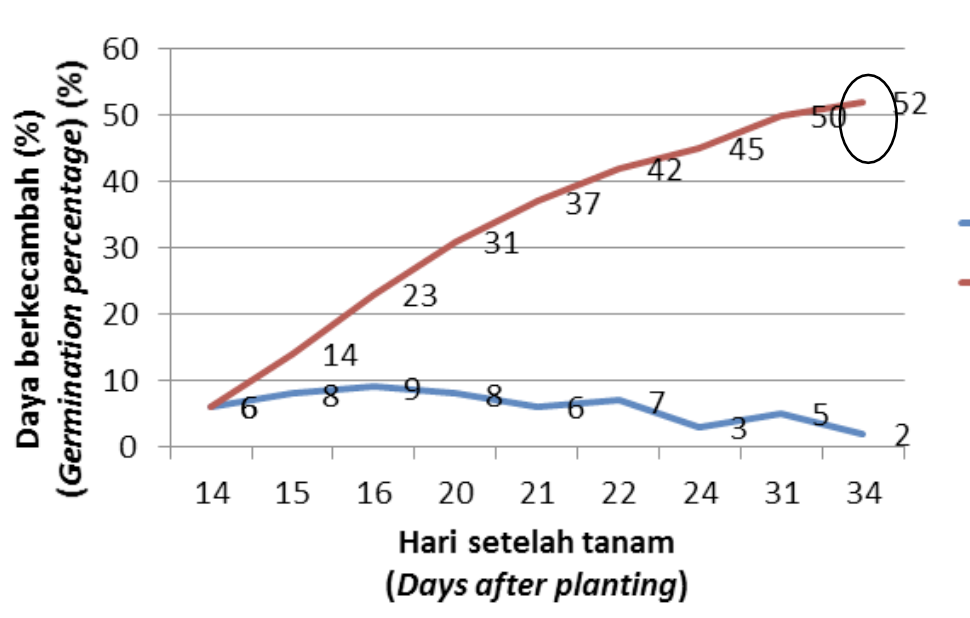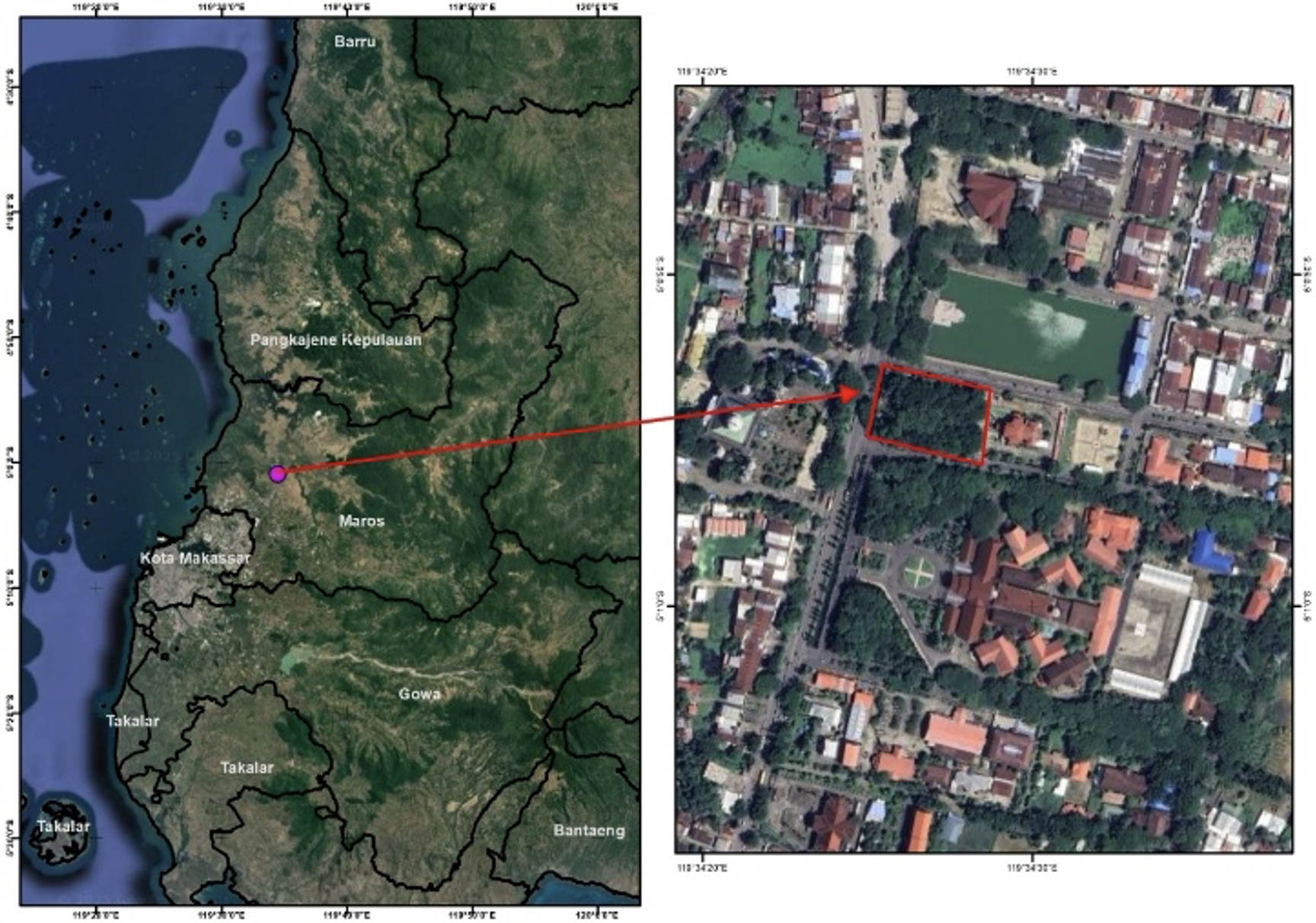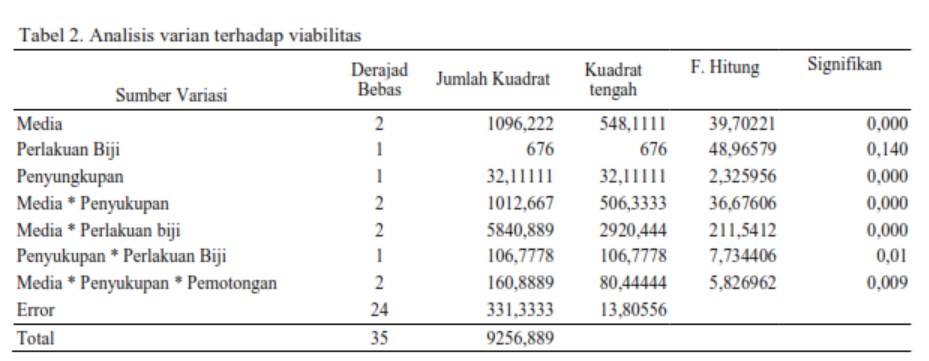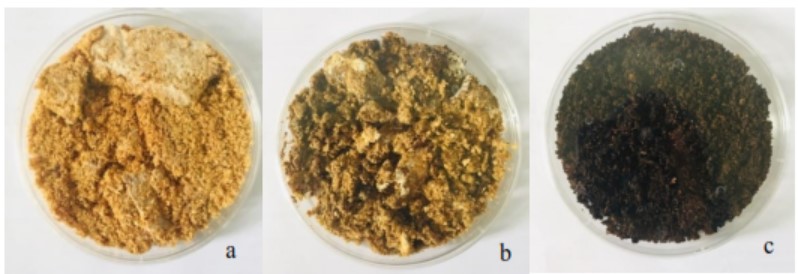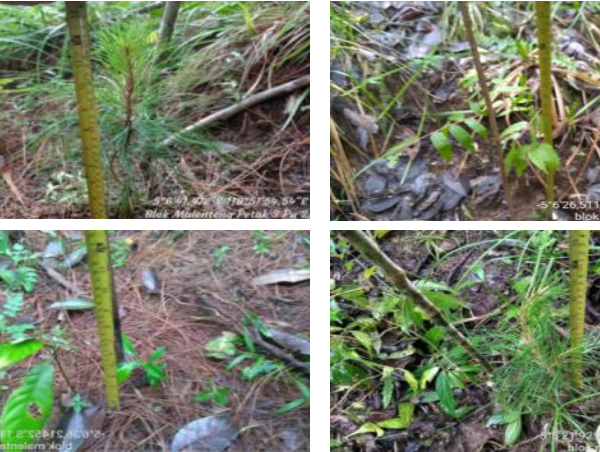The Effect of Invigoration Using Polyethylene Glycol And Ultra Fine Bubble on Improving of Sengon Seeds (Falcataria Moluccana Miq.) Quality After Two Years Storage
Abstract
Utilization of seeds storage results in decreased plant productivity. The increase can be used by treating seeds before planting through the technique of invigoration. This purpose of the study is to assess the effectiveness of invigoration methods using polyethylene glycol (PEG 6000) and ultrafine bubbles (UFB) to improve viability and vigor of sengon seeds (Falcataria moluccana). Seed agieng using 96 % ethanol was carried out to obtain the diversity of seedlot viability as the materials for testing the effectiveness of invigoration treatments. A complete random design was used to test the effectiveness of 5 invigoration treatments, i.e., seed without invigoration treatment, soaking in PEG 6000 -0.8 MPa, soaking in PEG 6000 -1.2 Mpa, soaking in UFB water injected by environmental air, and soaking in UFB water injected by oxygen 99 %, with soaking time is 24 hours for each treatment. Seed agieng resulted three classes of seed viability, i.e. 62 % (initial seed), 83 % (seed agieng for 30 minutes) and 57 % (seed agieng for 60 minutes). In the condition of seed germination before treatment (DBA) 57 % and DBA 62 %, invigoration treatments were significantly affected on seed germination capacity, but not significantly different in DBA 83 %. The soaking treatment of UFB injected by oxigen 99 % was able to improve the germination parameters (germination capacity, germination rate, and vigor index) on the sengon seeds with DBA 57 %. For seeds with DBA 62 %, the soaking treatment in UFB injected by environmental air was provided the best germination capacity, T50, and vigor index. The treatment of UFB injected by oxygen 99 % was more effective to improve the seed with very low viability and vigor (DBA 57 %). In general, improving of seed viability and vigor is more effective by using UFB than PEG 6000.
الحقوق الفكرية (c) 2021 Jurnal Wasian

هذا العمل مرخص بموجب Creative Commons Attribution-NonCommercial 4.0 International License.
Copyright and License
All articles published in Wasian Journal are the property of the authors. By submitting an article to Wasian Journal, authors agree to the following terms:
-
Copyright Ownership: The author(s) retain copyright and full publishing rights without restrictions. Authors grant the journal the right to publish the work first and to distribute it as open access under a Creative Commons Attribution 4.0 International License (CC BY 4.0).
-
Licensing: Articles published in Wasian Journal are licensed under a Creative Commons Attribution 4.0 International License (CC BY 4.0). This license allows others to share, copy, and redistribute the material in any medium or format, and adapt, remix, transform, and build upon the material for any purpose, even commercially, provided that proper credit is given to the original author(s) and the source of the material

This work is licensed under a Creative Commons Attribution 4.0 International License. -
Author's Rights: Authors are permitted and encouraged to post their work online (e.g., in institutional repositories or on their website) prior to and during the submission process, as it can lead to productive exchanges and greater citation of published work.
-
Third-Party Content: If your article contains material (e.g., images, tables, or figures) for which you do not hold copyright, you must obtain permission from the copyright holder to use the material in your article. This permission must include the right for you to grant the journal the rights described above.
-
Reprints and Distribution: Authors have the right to distribute the final published version of their work (e.g., post it to an institutional repository or publish it in a book), provided that the original publication in Wasian Journal is acknowledged.
For the reader you are free to:
- Share — copy and redistribute the material in any medium or format for any purpose, even commercially.
- Adapt — remix, transform, and build upon the material for any purpose, even commercially.
- The licensor cannot revoke these freedoms as long as you follow the license terms.
Under the following terms:
- Attribution — You must give appropriate credit , provide a link to the license, and indicate if changes were made . You may do so in any reasonable manner, but not in any way that suggests the licensor endorses you or your use.
- No additional restrictions — You may not apply legal terms or technological measures that legally restrict others from doing anything the license permits.
Notices:
You do not have to comply with the license for elements of the material in the public domain or where your use is permitted by an applicable exception or limitation .
No warranties are given. The license may not give you all of the permissions necessary for your intended use. For example, other rights such as publicity, privacy, or moral rightsmay limit how you use the material.
الأعمال الأكثر قراءة لنفس المؤلف/المؤلفين
- Ratna Damayanti Siantur Ratna , Dede J Sudrajat Dede , Correlation of Morphological Characteristics of Nyamplung Seedling (Calophyllum inophyllum L) with The Performance at Field Condition , Jurnal Wasian: مجلد 6 عدد 1 (2019): June
- Yulianti Bramasto Yulianti, Nurheni Wijayanto Nurheni , Iskandar Z Siregar Iskandar, I.G.K. Tapa Darma Darma, The Variability of Seed Viability and Seed Vigour of Mindi (Melia azedarachlinn.) from Several Populations in The Community Forest of West Java , Jurnal Wasian: مجلد 3 عدد 2 (2016): December

